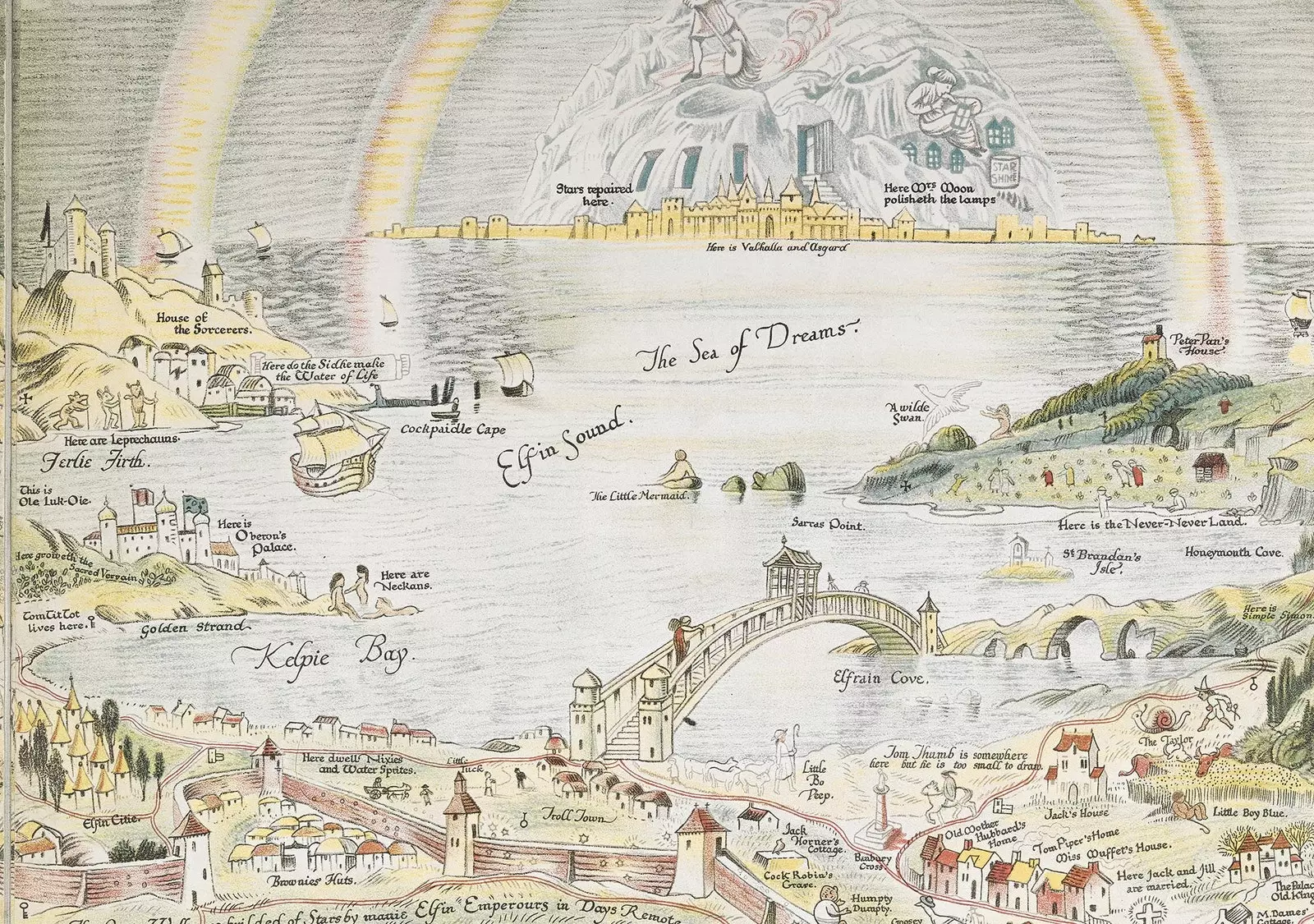
Detail from 'An Ancient Mappe of Fairyland', by Bernard Sleigh
literary maps. Writers' Imaginary Lands it is not read in one go. It is consulted. At any time, although it is especially advisable to do it when one is hungry for beauty, for curiosity to satisfy by getting lost, although it sounds paradoxical, in pages full of maps, those that help us travel through the stories of some of our favorite books.
It is recommended for your enjoyment, of course, an inordinate love for maps; have developed the ability to reading for pleasure to recreate in each of the phrases that make up this book; be in possession of a spirit always ready for adventure and of one blind trust in imagination.
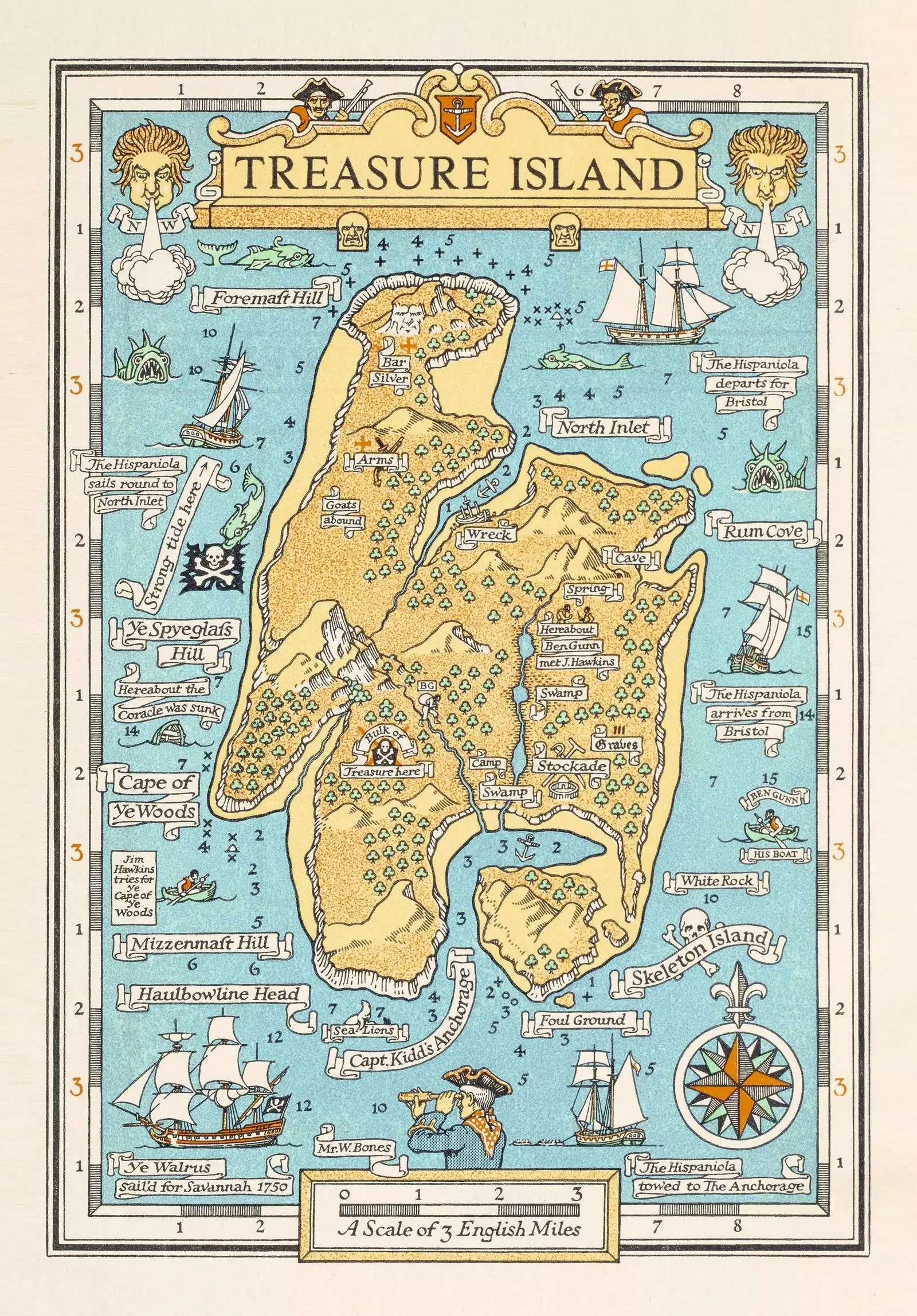
Munro Orr's reinterpretation of Robert Louis Stevenson's Treasure Island map
Because literary maps. imaginary land of writers It is a beautiful book, which comforts and in which to enter without haste; a book in which indirectly it speaks of the time when there was still room for fascination and in which satisfying our curiosity was the prize for the ability to amaze us and show that we do not know everything.
And, as he explains to Traveler, he is the author of the book, Huw Lewis-Jones, "To create, you have to be curious." It was from this curiosity that the worlds to which we travel were born with each paragraph we read of The Hobbit, The Wizard of Oz, Peter Pan, Harry Potter, Alice in Wonderland, Robison Crusoe, of Narnia… And it adds up and goes on.
That these paragraphs are accompanied by a map only increases the emotion of knowing that we will be able to understand and place in a space the steps of our protagonists, making that feeling of traveling with them more palpable.
“The contours of a map give authenticity to the invention. And the best maps locate us, but they also send us on new journeys. They inspire adventure. Sometimes, it's good to get lost and wander. As Tolkien wrote: 'Not all who wander are lost,'" says the author.
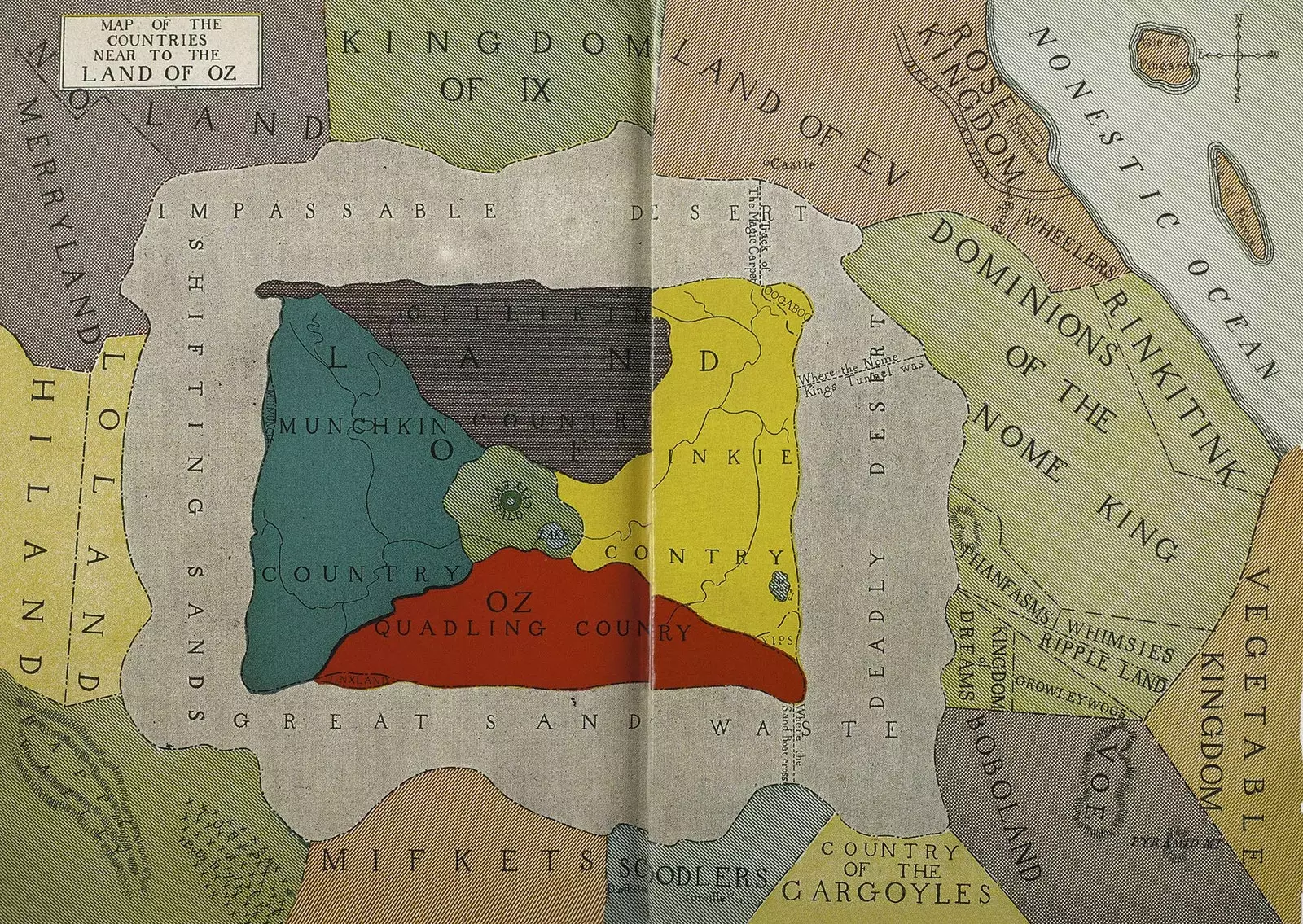
‘Map of the countries near the Land of Oz’, by John R. Neil inspired by the ‘Tik-Tok of Oz’, by Frank L. Baum
It was precisely that plus that maps bring to stories that led Lewis-Jones to shape Literary Maps. Imaginary land of writers. “Most stories don't need maps, but many of them are better thanks to the maps”. Let's say that his unconditional love for cartography also had something to do with it and served to attract to his project the rest of the writers with whom he has shaped this book.
"For Literary Maps I started talking to writers with whom I share a love of books and the team grew and the project developed. The maps they love. The maps they use. The maps that make them dream”.
The result is the compilation of maps that writers like, those that make them dream and even the sketches that inspired their creative process accompanied by an explanation of that experience. A compendium of words and beautiful illustrations that shape a very particular atlas, the atlas of the imagination.
This atlas of the imagination is divided into parts, Fantasy, Writing Maps, Creating Maps, and Reading Maps, in which most of the important literary maps have been accommodated.
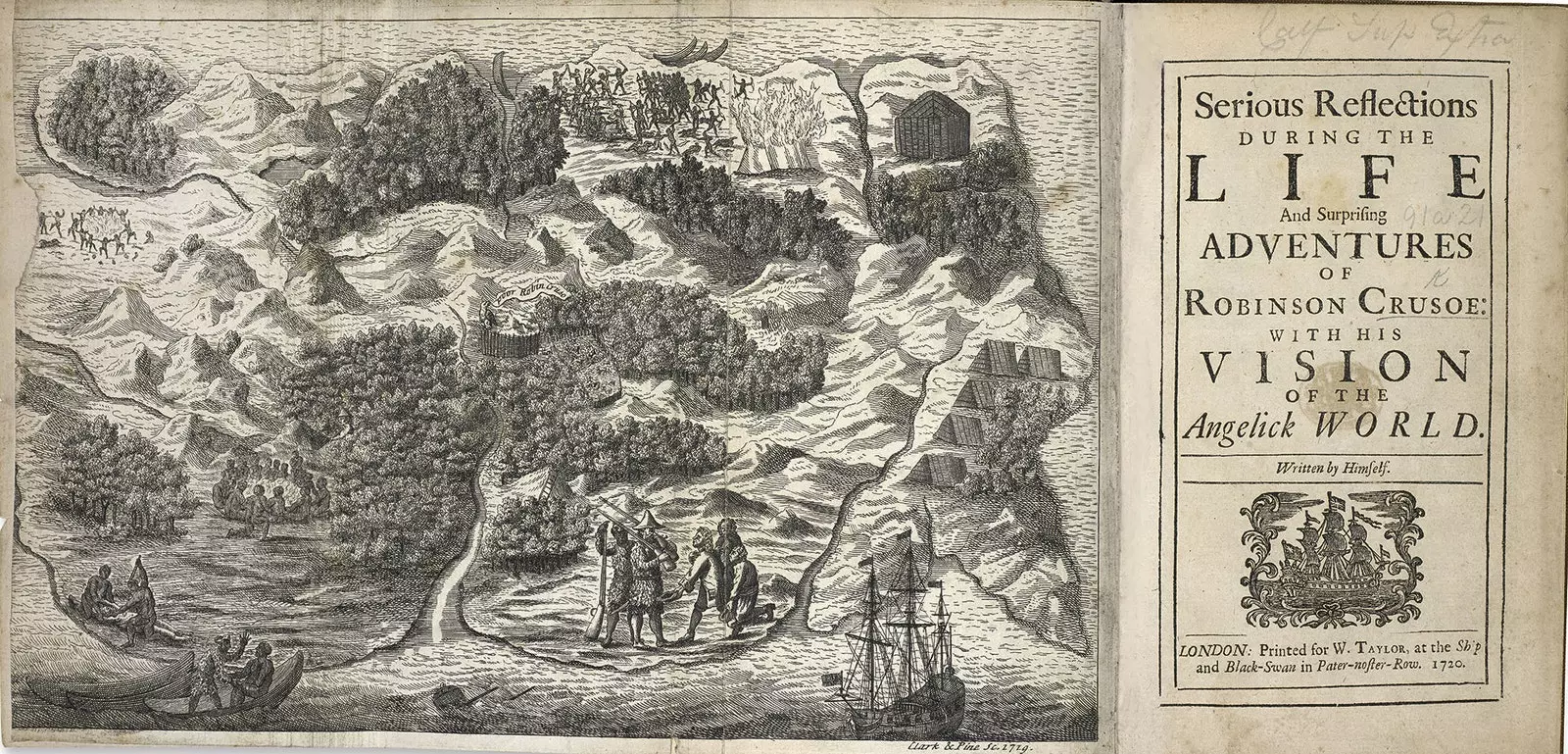
Map of 'Serious reflections on Robinson Crusoe', by Daniel Defoe
"A part of the book is the history of the maps in the books, so I started with some of the early performances and then I worked on some of the classics in English, like Robison Crusoe or Treasure Island, other authors along the lines of Jules Verne…” recalls Lewis-Jones.
From there he went to Narnia, Lilliput, Earthsea, Middle Earth, Oz or Neverland. "Nevertheless, one of the great joys of this project is that, of course, it has no end. As readers have found the book and are enjoying it around the world, people are writing to me with suggestions for maps they've never seen before." Nonetheless, confirms that there will be no second part.
Of all those that make up Literary Maps, Lewis-Jones highlights one, the one that shapes Angria, the imaginary land invented by Charlotte Brontë in 1826, when she was nine years old. “The book is so small that it fits in one hand. She was a girl like any other, She wrote a story for herself and put a map in front of her." she reflects.
Brontë, just as so many others had done before and continue to do so many others after, knew how to see the creative possibilities that a blank space offered him. Because, as Aldo Leopold wrote, “For those who have no imagination, a blank spot on the map is a waste; for others it is the most valuable part”.
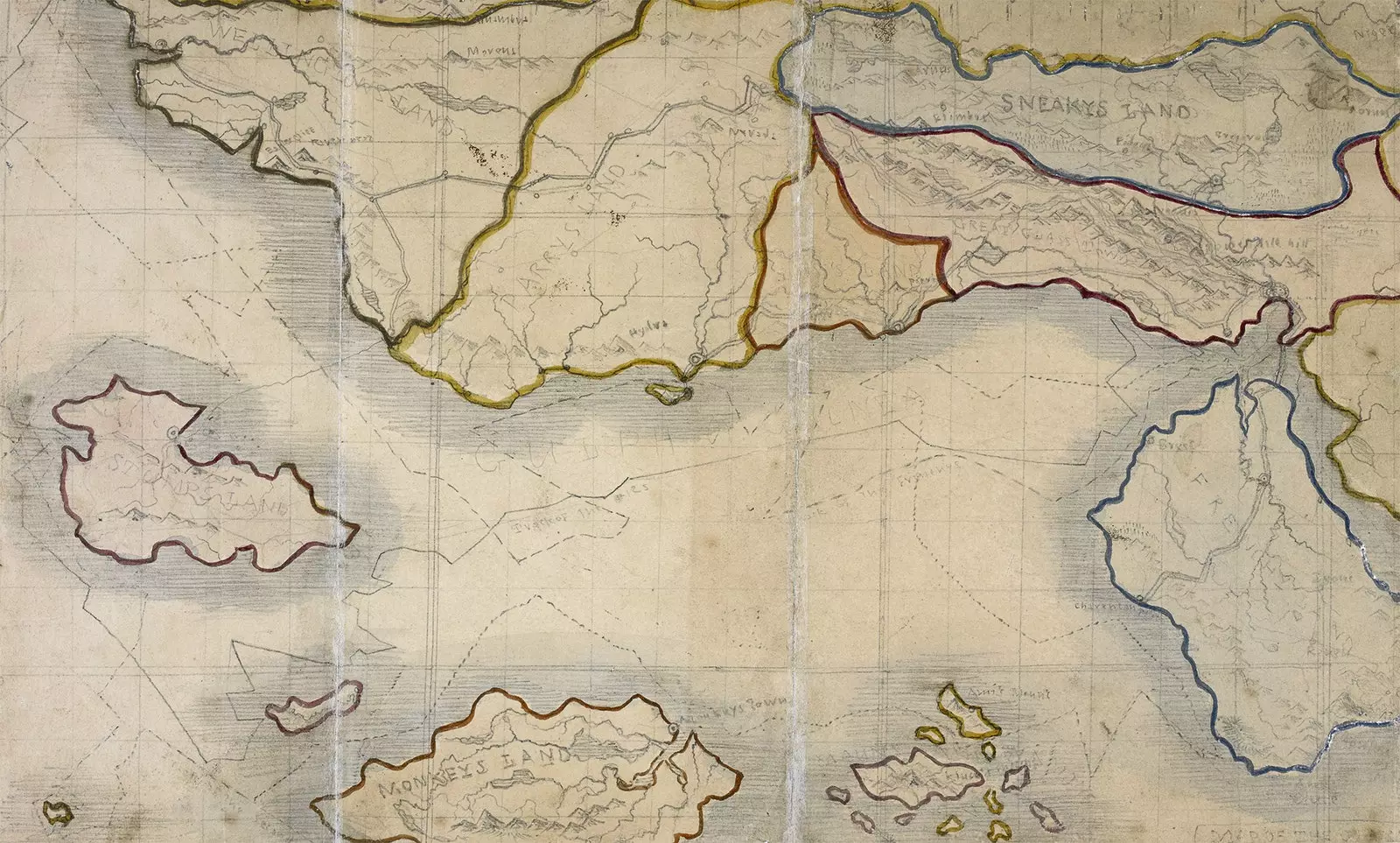
Map of Verdopolis, or Glass Town, from Branwell Brontë's 'The History of The Young Men from Their First Settlement to the Present Time', 1830-1831
